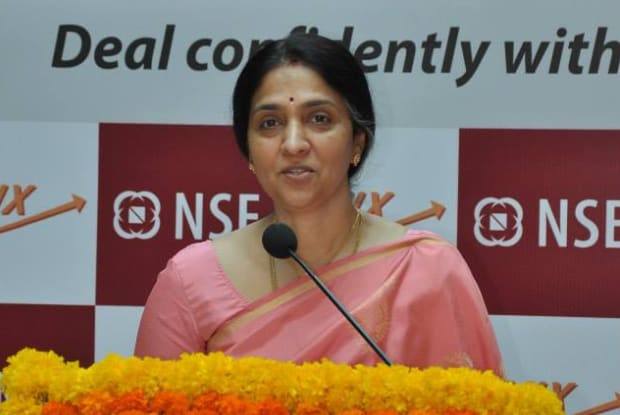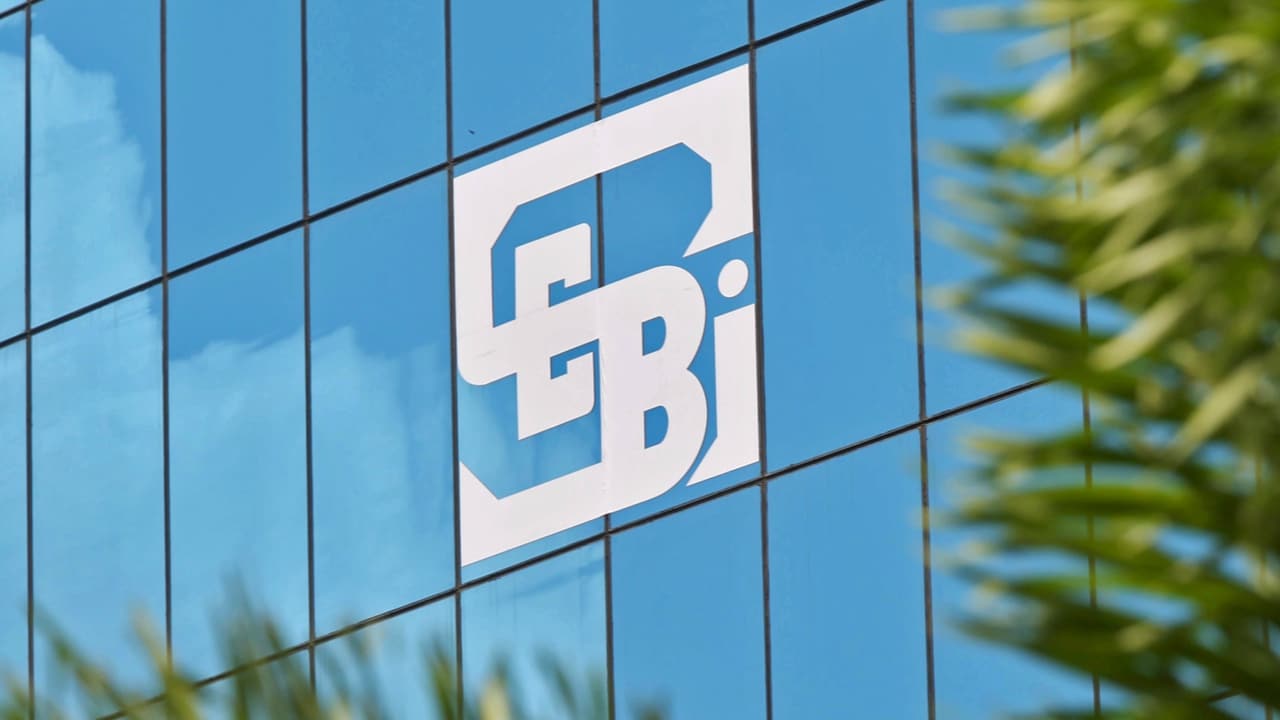Decoding identity of Chitra Ramkrishna’s mysterious yogi: some possible clues

KV Prasad Jun 13, 2022, 06:35 AM IST (Published)
 Listen to the Article (6 Minutes)
Listen to the Article (6 Minutes)
Summary
As mystery continues around the yogi in the Himalayas advising NSE’s ex-CEO Chitra Ramkrishna on matters of the stock exchange, we examine the likely suspects, obvious but unanswered questions, and possible reasons.
Who is (or was) the mysterious yogi in the Himalayas advising NSE’s ex-CEO Chitra Ramkrishna on matters of the stock exchange is the question on the minds of everybody with even a passing interest in financial markets.
Consultancy firm EY has pointed out Anand Subramanian, NSE’s former Group Operating Officer and Ramkrishna’s close confidante, as the person behind the e-mail id rigyajursama@outlook.com with whom Ramkrishna had shared confidential information. NSE seems to agree with that, but SEBI is not buying the theory.
There are other names doing the rounds in market circles as well, including those of a former finance minister and a senior finance ministry official. Then there are those who feel the mastermind is none of the above.
Let us examine the likely suspects, obvious but unanswered questions, and possible reasons.
First up, Anand Subramanian, the man at the centre of the controversy.
There are many reasons to believe, besides the EY report, that he could be the yogi. One, the ‘chemistry’ between Chitra and Subramanian was an open secret among NSE staffers and the topic of water cooler discussions.
NSE insiders say both she and Subramanian were believers in astrology and orthodox rituals, and that he had a strong hold over her. He rode roughshod over senior colleagues, without ever being reprimanded. Chitra had certain administrative rules altered so that Subramanian could enjoy perks (first class air travel, accommodation on business trips) that he was otherwise not eligible for.
A perusal of the mails shows that Subramanian is a clear beneficiary of the yogi’s directions, in terms of salary increments, perquisites, and power. The theory is that Anand would put forward proposals to Chitra, which she would consult the yogi on, and the yogi in turn would approve.
On some of these mails, Subramanian too was marked. It may have been Subramanian’s way of ensuring that Chitra followed the instructions of the yogi.
All this fits well with the surmise that he was the one duping Chitra into giving him more powers and money.
But there are reasons as well to believe that Subramanian may not have been the yogi.
First, Chitra herself has said that Subramanian is not the yogi. Second, she said she had been taking guidance from the yogi for 20 years. Assuming these statements are true, it is likely that Subramanian is not the yogi because his stint at the NSE overlapped with Chitra’s at the NSE for less than four years. And since he had no experience of capital markets prior to joining NSE, why would Chitra consult with him all these years?
But there are even bigger reasons why NSE insiders feel that Subramanian may not be the yogi. People who have been privy to his official e-mails say his language skills were not from the top drawer. Also, those who have interacted with Subramanian say his grasp of matters—technical as well as strategic—was not of the highest order.
This is at variance with the tone, tenor and content of the emails emanating from rigyajursama.
Chitra is accused of sharing confidential information of the exchange with him. What surprises many is that the information would anyway have been accessible to him, given his seniority in the hierarchy. Why go through the charade of an e-mail when there was a possibility of it being traced. He could have as well walked up to Chitra and gotten all the details on a pen-drive.
Another clue as to why he may not be the writer of the emails can be seen in the instructions from the yogi.
In one of the mails relating to organisational structure, the yogi has directed that certain officials have a dotted line reporting to ‘RV/Subbu’ (Subramanian). The person with the initials RV is most likely Ravi Varanasi, given his seniority. NSE insiders say Varanasi was the only one among senior officials who openly defied Subramanian. Others who tried to do that were cut down to size. Interestingly, Chitra was far more tolerant of Varanasi, than the other seniors who were resentful of Subramanian.
If Subramanian and Varanasi did not get along, why would Subramanian want to share power with him?
In another e-mail, Chitra writes to the yogi seeking guidance on which of the FIIs to be appointed on the NSE board. She mentions that G (which the EY report says is Subramanian) has suggested that Saif Capital, supposedly the nosier of FII shareholders. be appointed on the board as he felt ‘making the troublemaker the monitor was the best way to shut them up.’
But the yogi’s reply to Chitra while suggesting Goldman Sachs for the board position is clear on who calls the shots.
“Kanchan will evaluate as per MY will. Don’t worry the straw knows when to be a capillary and when NOT to. Kanchan is the straw and I will be the suction force for this,” writes the yogi. The EY report has identified Kanchan as Subramanian.
Lastly, the yogi is seen asking for a cut of Subramanian’s pay:
“Kanchan to withdraw and surrender to me per month as gratitude on gross amt.”
Why would Subramanian want to pay himself using his own money?
Also Read | NSE-Yogi saga: CBI grills former NSE CEO Chitra Ramkrishna
Next, many suspect the yogi could be some high ranking finance ministry official in the previous administration, or even a former finance minister from that era.
Why the suspicion?
NSE appeared to have free pass of sorts during the UPA regime. MCX’s application to launch a stock exchange was delayed endlessly. BSE’s proposal to buy a majority stake in share registry firm CAMS was nixed by SEBI, which felt exchanges should not get into unrelated business. However, not long after, NSE was allowed to buy a 45 percent stake in CAMS. But the most brazen act by NSE was to offer colocation facility to its trading members in 2009, without SEBI first putting up a discussion paper on it as is usually the protocol.
Within months after this facility was introduced, a handful of brokers exploited the loopholes in the system by conniving with officials and bilked the system of billions from 2010 to 2015. The matter came to light when a whistleblower’s mail alerted the authorities to it.
It would not have been possible for NSE to defy SEBI and crush rivals without the blessings of the finance ministry. The patronage would have come at a price, no doubt.
Also, the yogi wrote a mail to Chitra’s assistant, asking for a meeting to be set up in Delhi.
The theory cannot be ruled out completely, but then NSE is known to have defied SEBI as way back in 1999, when it started offering a facility called ALBM that allowed its trading members to carry forward their trades. The facility was already in use for nine months when SEBI formally approved NSE’s application.
Also, ministers and bureaucrats are past masters at covering their tracks. Why would they incriminate themselves by seeking information over e-mail when it could be easily traced back to them?
But more importantly, why would anybody at that level be concerned with relatively junior level appointments, designations and reporting lines?
Then there is the theory that the e-mail instructions could have been from a genuine spiritual guide based out of Chennai, whom both Chitra and Subramanian were said to be visiting once in a while to take advice. Again, would such a yogi have such a good grasp of NSE’s organisational structure, and also the who and how of lobbying with Delhi. Advice was being given on micro matters of the organization, such as travel rules for senior staff, which logically should not concern a yogi.
That brings us to the burning question: who then is this yogi from whom Chitra was taking guidance on organisational matters all these years? She says it has been going on for 20 years, though excerpts from the e-mails in the SEBI report are mostly for 2015.
Let us assume Chitra is speaking the truth.
People who have worked with Chitra say she is religious, but nothing seems to suggest that she is superstitious. It is not uncommon for celebrities, politicians and business leaders to have spiritual gurus. In this case, Chitra appears to have been relying on someone whose judgment on professional matters she could trust.
By 2015, relations between her erstwhile mentor Ravi Narain had soured.
Insiders recount instances when Narain was kept waiting by Chitra for some of the committee meetings. Also, Subramanian’s abrasive ways had antagonised many senior officials who were once loyal to her. They switched sides to Narain. Chitra had hired seniors in key positions after taking charge as MD and CEO, but none of them knew the workings of the exchange as well as the old timers.
The person writing to Chitra from the e-mail id rigyajursama may have been guiding her on spiritual questions as well, but all the mails SEBI has produced relate to professional matters such as promotions, designations, board seats, listing, etc. And that person is unlikely to have been Subramanian, going by what former peers and subordinates thought of his capabilities.
Again, some clues as to the background of the yogi are evident from the mails. Clearly, he/she is somebody who is familiar with the nuts and bolts of the exchange’s operations, knows the organizational structure like the back of the hand, and has a good idea of people.
Also, most of the promotions/redesignations mentioned in the mail relate to people who have been in the NSE system for years, some of them since inception. Evidently, the person appears to relish playing godfather to many of the old timers.
Check these excerpts:
“…she requires polishing, everyone has a godfather for his growth, for her it is ME for a commitment given yesteryears, so she can be promoted and moved to SME as head and also be Management Representative for Business Excellence for the audit purpose reporting to RV and SS.”
Note the use of the word ‘yesteryears’, indicating that the yogi has known the staffer for many years.
Managing the organizational structure, a good awareness of technology and being aware of the rule book were key to ensuring that no staffer from the IT team was hauled up by SEBI despite the irregularities in the colocation facility.
The outgoing and incoming Chief Technology Officers did not have anybody reporting to them, though in the second case, the anomaly was rectified. SEBI could never prove the whistleblowers allegations that some brokers got help from officials to consistently log on to the server with the least load, and thereby execute trades ahead of the rest of the market.
The SEBI probe did find that some brokers had regularly logged on to the backup server, giving them an unfair advantage. Here again, there were no clear rules or penalties relating to backup servers.
Then there is the downright salacious stuff, which when stripped of the sordid details also seems to indicate that the person may have been interacting with Chitra regularly even while keeping a distance.
From a mail dated February 15, 2015
“Today you are looking Awesome. You must learn different ways to platt your hair which will make your looks interesting and appealing.”
From a mail dated February 24, 2015
“I overheard with Kanchan when you said lets pack and leave.”
There is a possibility that this person was still officially in the system at that point, someone far more capable than Subramanian and better people skills. Or the person could be a former employee who never really went out of the system.
Another commonly asked question is why was NSE keen to prove that Anand Subramanian was the yogi? The NSE even submitted a psychologist’s report to SEBI saying that Subramanian was exploiting Chitra by masquerading as the yogi and getting her make decisions as he chose.
Given the sensitivity of the case, and the controversies surrounding Chitra’s and Subramanian’s exits, the exchange should have ideally preserved their computer systems. Strangely, NSE says it disposed off its laptops as e-waste.
The most likely reason for this is that the exchange felt it would look less silly if it could prove that Chitra had not shared details with an outsider, but rather with a senior official of the exchange who was manipulating her.
As for SEBI, the big question is why did it not try to find out the person behind the e-mail id rigyajursama, other than dismissing EY’s finding saying there was no conclusive proof that Anand Subramanian was the person receiving and sending mails from that id. This, when SEBI was convinced that Chitra had shared confidential information/data pertaining to NSE’s 5-year financial projections, dividend pay-out ratio, NSE’s business plans, agenda of NSE’s board meeting and performance appraisals of NSE employees.
There is a strong case for not Subbu, but a longtime insider of NSE being the yogi. Only a handful of them have been in that position. If the investigation agencies want to dig deeper, the mystery will not be difficult to solve.

Elon Musk forms several ‘X Holdings’ companies to fund potential Twitter buyout
3 Mins Read
Thursday’s filing dispelled some doubts, though Musk still has work to do. He and his advisers will spend the coming days vetting potential investors for the equity portion of his offer, according to people familiar with the matter

KV Prasad Journo follow politics, process in Parliament and US Congress. Former Congressional APSA-Fulbright Fellow










 Listen to the Article
Listen to the Article  Daily Newsletter
Daily Newsletter









